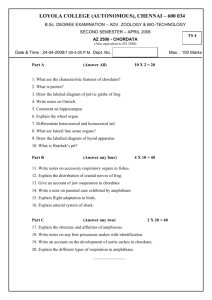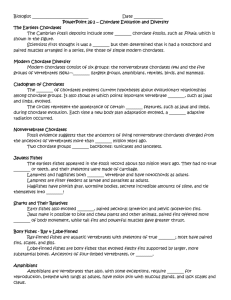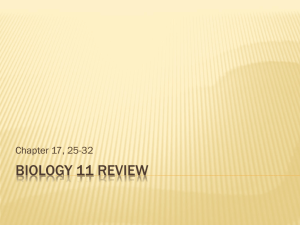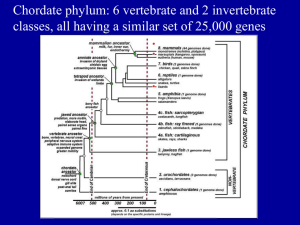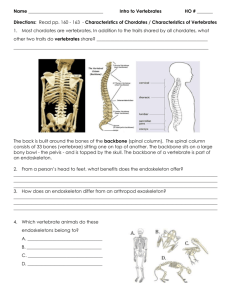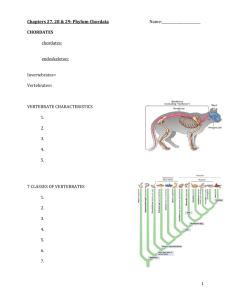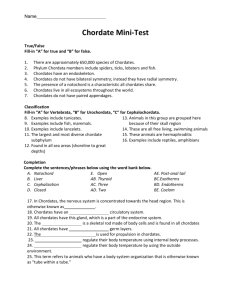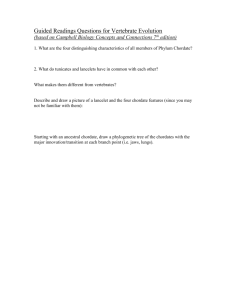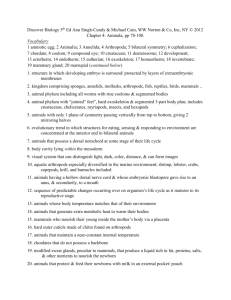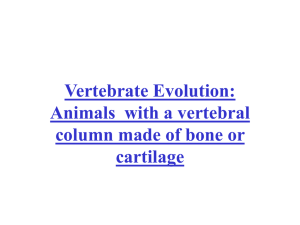26-2 Reading Guide
advertisement
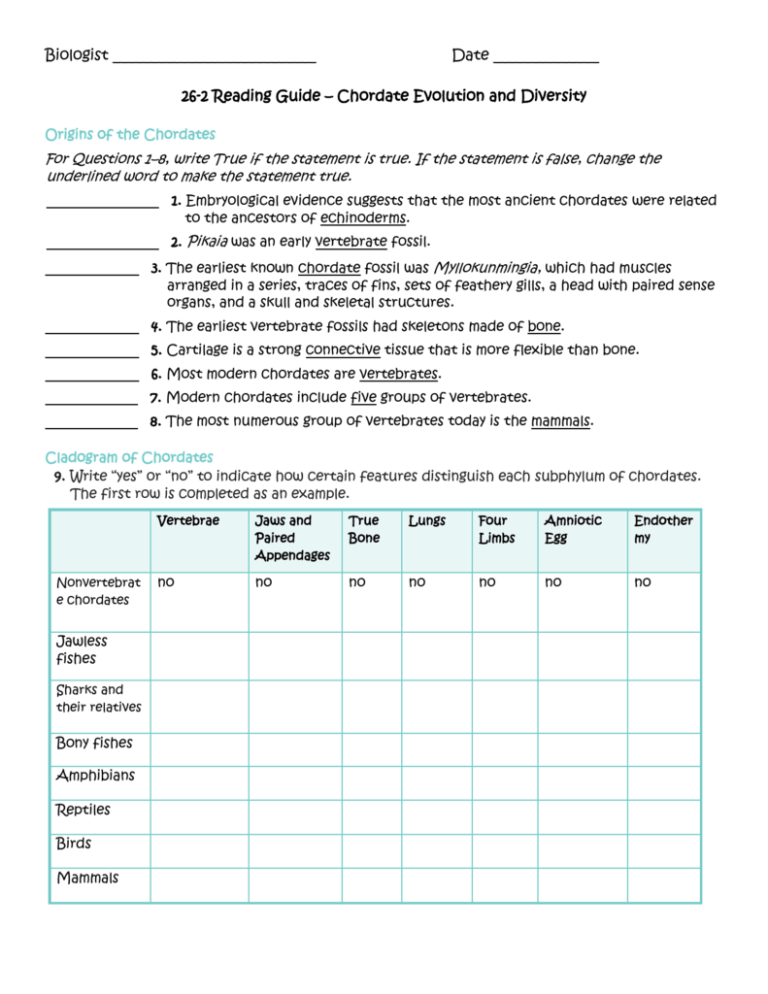
Biologist ___________________________ Date ______________ 26-2 Reading Guide – Chordate Evolution and Diversity Origins of the Chordates For Questions 1–8, write True if the statement is true. If the statement is false, change the underlined word to make the statement true. 1. Embryological evidence suggests that the most ancient chordates were related to the ancestors of echinoderms. 2. Pikaia was an early vertebrate fossil. 3. The earliest known chordate fossil was Myllokunmingia, which had muscles arranged in a series, traces of fins, sets of feathery gills, a head with paired sense organs, and a skull and skeletal structures. 4. The earliest vertebrate fossils had skeletons made of bone. 5. Cartilage is a strong connective tissue that is more flexible than bone. 6. Most modern chordates are vertebrates. 7. Modern chordates include five groups of vertebrates. 8. The most numerous group of vertebrates today is the mammals. Cladogram of Chordates 9. Write “yes” or “no” to indicate how certain features distinguish each subphylum of chordates. The first row is completed as an example. Nonvertebrat e chordates Jawless fishes Sharks and their relatives Bony fishes Amphibians Reptiles Birds Mammals Vertebrae Jaws and Paired Appendages True Bone Lungs Four Limbs Amniotic Egg Endother my no no no no no no no 10. Sharks and their relatives are the first group of animals with jaws. Why are jaws a significant evolutionary development? 11. What three adaptations were needed for chordates to move from living in water to living on land? 12. One group of feathered dinosaurs led to modern birds. What advantage might feathers have given these dinosaurs? 13. How do mammals differ from all other chordates on the cladogram? 14. Which chordate groups can regulate their body temperatures? 15. Much evidence supports the hypothesis that modern birds share a common ancestor with dinosaurs. Make a sketch to show the probable evolutionary relationships among modern birds, modern reptiles, and extinct dinosaurs. Circle the clades shown in your diagram.
